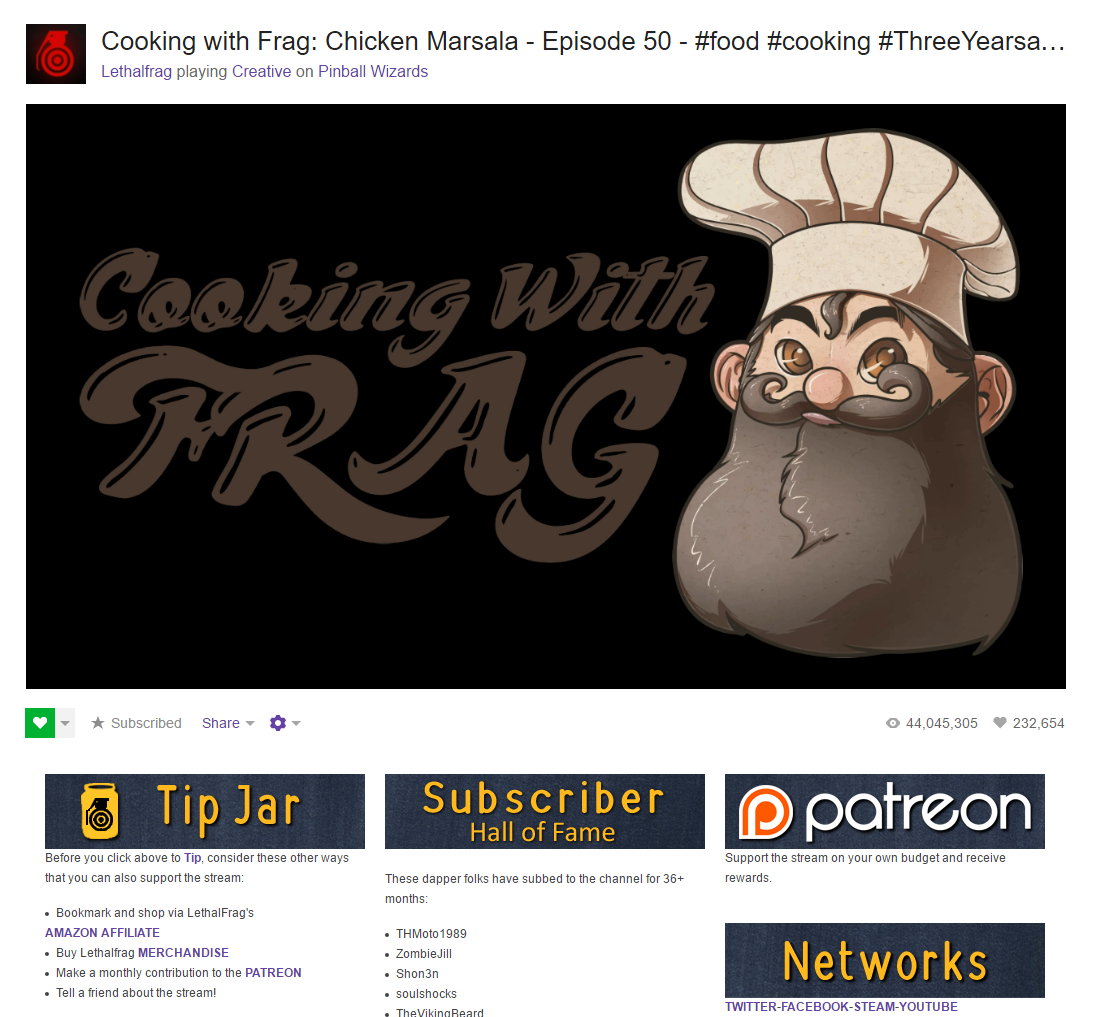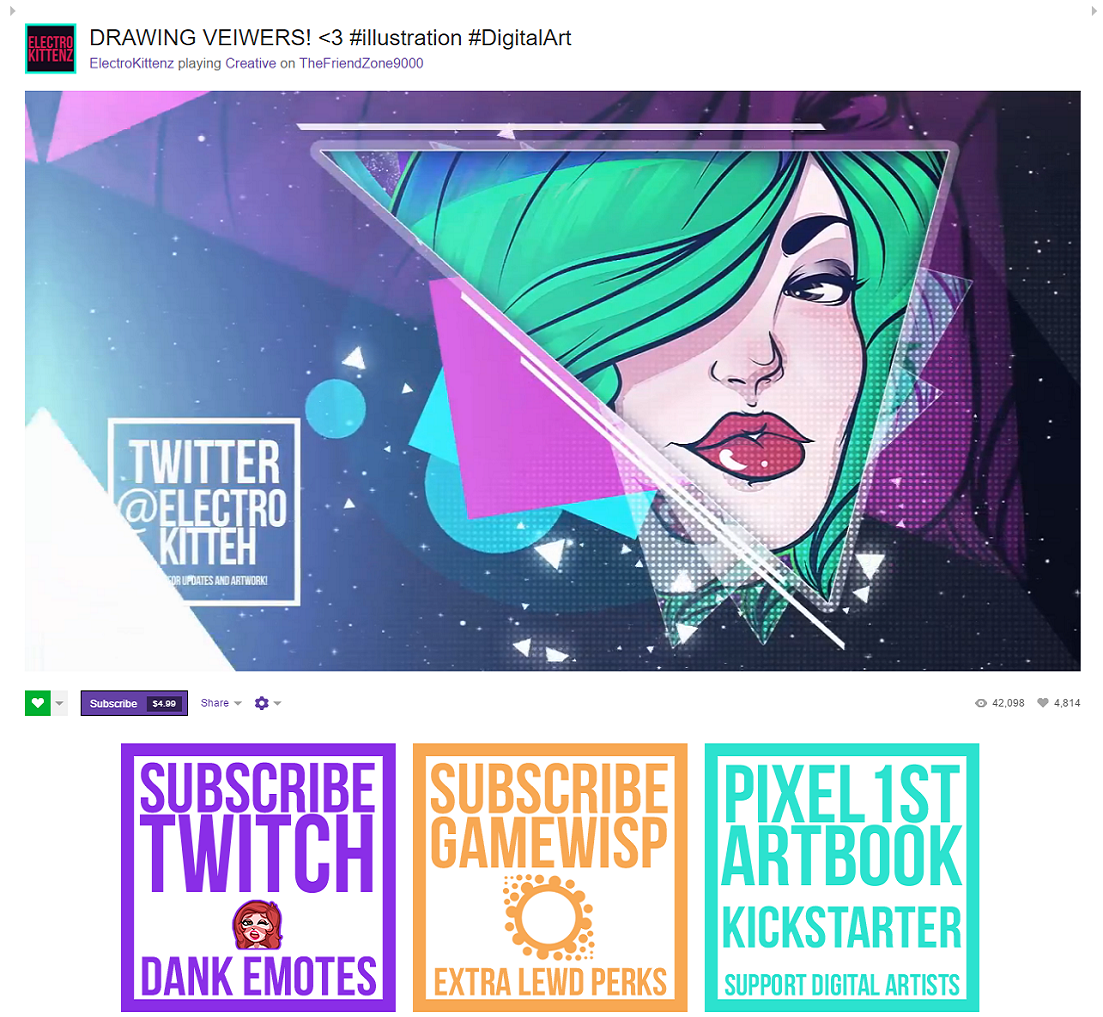Planning and Mental Preparation
Let me begin with a reminder: know your goals for broadcasting and realize that different goals require different things. A strict broadcasting schedule, for example, may leave someone testing the waters with broadcasting burnt out, but is necessary for someone trying hard to maximize their stream growth. With that in mind, here are some preliminaries you should think about and work on as you start toying with broadcasting.
-

Remember to Enjoy Yourself
If you don’t enjoy creating content, people likely won’t enjoy the content you create. Personality and energy are important for drawing people to your stream. Once you start losing those because you aren’t enjoying yourself, something needs to change. Before you even start broadcasting, you don’t know if you’ll enjoy it. Keep fun in mind as you think about these suggestions, and never forget it as your channel grows.
-

Figure Out What Makes You Interesting
Take a long few minutes to figure out what are the best aspects about you. You don’t need something crazy, different, or unique here. Are you an exceptionally skilled gamer? Do you think you’re funny? Can you instruct others? Make people feel good about themselves? If you can’t think of anything, you aren’t trying hard enough.
-

Name Your Channel Carefully
Your Twitch handle will stick with you the entire time you broadcast. Name changes are next to impossible to get, and you probably don’t want to rebuild everything on a new channel just because you want a different name. Ideally, your name would be unique and interesting. Symbols, underscores and random letters/numbers are probably unnecessary. When in doubt, simple is best.
Once you create your Twitch name, take thirty minutes out of your day. Create an e-mail account tied to that name. Use it to register accounts with your Twitch handle on Twitter, Facebook, Youtube, Discord, Steam, and any other forms of social media or services you may ever think about using. It costs nothing, and you’ll reserve those spaces for whenever they’re relevant to you.
-

Think About Your Schedule
The times you broadcast are important, especially to you. Committing to more than you can enjoyably do is a disaster waiting to happen. However, streaming more hours is generally better for growing a broadcast, and keeping those hours consistent from week to week benefits you and your viewers. Finding a happy medium between randomly casting and a strict schedule is important.
Some things to keep in mind:
- Short streams make it hard to reach new viewers and hold interest. Broadcasting at least 2-4 hours at a time usually works well.
- Many “professional” broadcasters stream 4-8 hours at a time, 5-7 days a week. You don’t need to do this. However, if your schedule allows it and you enjoy streaming, it can be good for exposure.
- Twitch is worldwide and covers many time zones. If your showtimes shift wildly every day, you’ll be reaching viewers in many different time zones, who may not be able to watch your other broadcasts.
- Start small, and leave room to grow. Find a few regular times to broadcast throughout the week where you could have extra time to stream if you feel like it. Try to commit to some relatively short broadcasts and keep going if you enjoy it.
- Remember that changing your broadcast times without warning will make it more difficult for viewers to catch your stream again.
-

Practice Talking to Yourself, About Everything You Do
New viewers usually leave within a few minutes if they aren’t being entertained. That means you need to be engaging with an audience that might not even be watching you. Broadcasting without an audience benefits from constant commentary. Learn to narrate your life. Explain everything you’re doing, remembering that it may not always be clear to other people. Commentate your thought process - make your internal monologue external (with some filtering of course). Learning how to do that before you start broadcasting is a great place to start.
-

Watch Other Streams Critically
You probably watch at least a few decent streamers on Twitch for personal enjoyment. There should be some wonderful aspects of their broadcast and at least a few things that could be better. Watch their streams and figure out what those things are. Emulate good qualities, and try to avoid the bad. Do this with as many different broadcasters as you can. Take notes. When you start broadcasting, watch your past streams and do the same.
-

Don’t Commit To Just Being Yourself
Who you are and how you feel in your everyday life doesn’t have to determine how you act on stream. You can be yourself, or an even better you. You probably don’t naturally talk to yourself as you play video games, so why draw the line there? Be open to experimentation, especially before you have a solid audience. Try being silly, excited, bouncy, crazy, anything. Exaggerate your best qualities. Minimize your worst. Focus on how you say words and improve the way you speak.
There are no personality police. Nobody will say “you can’t act that way because you weren’t that way before.” Think of this like The New Guy - Twitch is a place where you are free to redefine yourself.
-

Consider the Niche You Want to Occupy
Realize that the types of games you play and when you switch them will impact your viewing audience. Know that the way you behave and how you interact with your audience shapes the way your stream will grow and how your chat will develop. There’s no need to decide what your place will be on Twitch early on, but you can start thinking about it as you begin.






